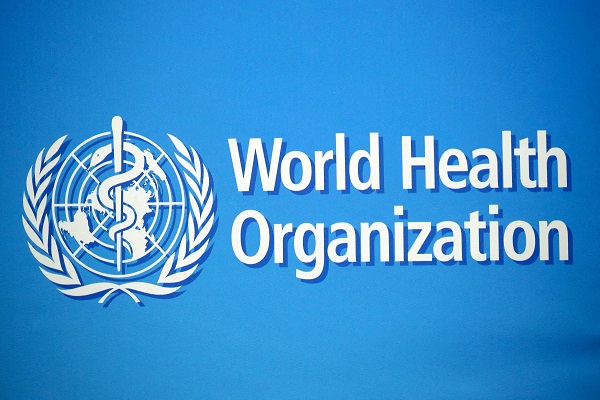The World Health Organisation (WHO) has worked assiduously over the years for the eradication of many communicable diseases.
However, infectious diseases that were hitherto under control are re-emerging globally and the pathogens of these diseases are highly resistant to known antibiotics.
Some of these re-emerging diseases include tuberculosis, plague, Lassa fever, yellow fever, measles, cholera, malaria, typhoid fever, influenza, dengue fever, Staph infections and diphtheria.
According to the WHO, factors responsible for the resurgence of these diseases include reduction in vaccination rates and antimicrobial resistance (AMR) in addition to climate and environmental changes.
The WHO reiterated that immunization and vaccination are the keys to curbing infection and spread of these communicable diseases.
There has been reemergence of diphtheria in Nigeria and other parts of the world. Diphtheria is a deadly disease that has hitherto been brought under control globally. The WHO earlier stated that global diphtheria disease burden decreased by over 80% between 1980 and 2018. However, the WHO African Region is presently grappling with a resurgence of the disease with five active outbreaks currently ongoing in Guinea, Mauritania, Niger, Nigeria and South Africa. Diphtheria is caused by Corynebacterium diphtheria, a gram positive bacterium transmitted through respiratory droplets, close physical contact, contaminated clothing and objects etc.
In Nigeria, the country’s Centre for Disease Control and Prevention (NCDC) stated that 42,642 suspected cases of diphtheria were reported with 25,812 confirmed cases across the country between February and March 2025. Out of the confirmed cases 1,319 deaths were recorded.
Diphtheria causes toxic damage to organs such as the heart, kidneys and peripheral nerves.
Tuberculosis is another disease that is re-emerging across the globe.
In Europe more than 225,000 cases of tuberculosis were reported in 2023 and 16,000 fatalities were recorded. This was stated in the 2025 European Tuberculosis Surveillance Report. According to the WHO, about 53 member states in the European Region reported tuberculosis cases with 30% of the cases being drug-resistant. The world’s top 30 countries with high-burden of drug resistant tuberculosis are also found in the European Region. It was reported that more than 53% of Europe’s cases of drug resistant tuberculosis are among previously treated patients.
In the USA, 147 cases were reported during an outbreak early this year 2025 with two fatalities. According to the United States Centre for Disease Control and Prevention (CDC), tuberculosis pathogen has developed multi-drug resistant strains. Hence, Mycobacterium tuberculosis, the bacteria that causes tuberculosis has once again been added to the global list of critical pathogens by the WHO.
Measles, an airborne disease, has also resurfaced with a vengeance. A total of 57 countries reported measles outbreak in March 2025. These countries include Morocco, Congo DR, Canada and the USA. According to the WHO, more than 25,000 cases were reported in Morocco from October 2023 to April 2025 with 184 deaths recorded. The country’s Ministry of Health and Social Protection stated that the cases were recorded across all regions of the country and 68% of these cases occurred among individuals under the age of 18. In DR Congo, about 2,000 cases were reported with 180 fatalities.
Reports also indicate that the US is facing a measles outbreak despite the declaration in the year 2000 that the disease has been eliminated. According to Dr. Dan Filardo, Head of Measles Task Force, US CDC, as at 11th of May 2025, about 1001 confirmed cases have been reported. Resurgences in measles outbreak have also been reported in Canada with about 1,000 cases and Mexico with more than 400 cases.
Resurgence of meningitis has also been reported.
Meningitis disease is the inflammation of the tissues surrounding the brain and the spinal cord. Countries in sub-Sahara Africa including Nigeria are reportedly vulnerable to the outbreak of the disease. Though the WHO reported decline in cases of the disease in this region, a significant increase in cases has been reported recently. Cases of the meningococcal disease are also rising in the USA.
Cholera is a water-borne infection caused by Vibrio cholera a Gram-negative bacterium. The symptoms include diarrhea, vomiting and blood in stool. According to the WHO, there has been a rise in cholera cases in The African Region especially in the Eastern and Southern Africa.
The WHO stated that since 2023, the Region has been grappling with the worst cholera epidemic which has affected 13 countries. More than 200,000 cases and 3,000 deaths have been recorded.
Zambia recorded more than 9,500 cases, 374 deaths and case fatality rate of 3.9%. 52% of the reported cases are children. Zimbabwe so far reported more than 18,000 cases with 1 in 6 new cholera infection affecting children under five.
UNICEF Regional Director for Eastern and Southern Africa, Etleva Kadilli said, “The cholera outbreak in the region is a significant concern to the health and well-being of children.” He stated that the impact of climate change, worsened by phenomena such as El Niño, further underscores the urgency of the situation.
Antimicrobial resistance makes treatment of infectious diseases increasingly difficult. With increasing disruption of the ecosystem brought about by climate change, containing the spread of these diseases during an outbreak is also an uphill task.
Therefore, prevention through vaccination as stated by the WHO is the most effective way to control these communicable diseases.



